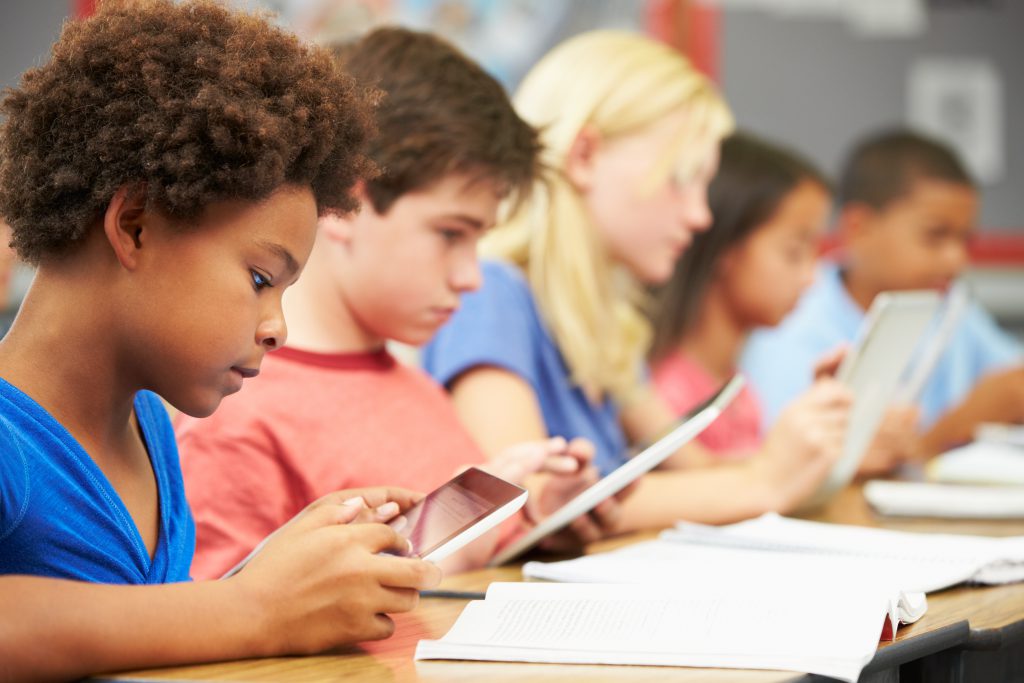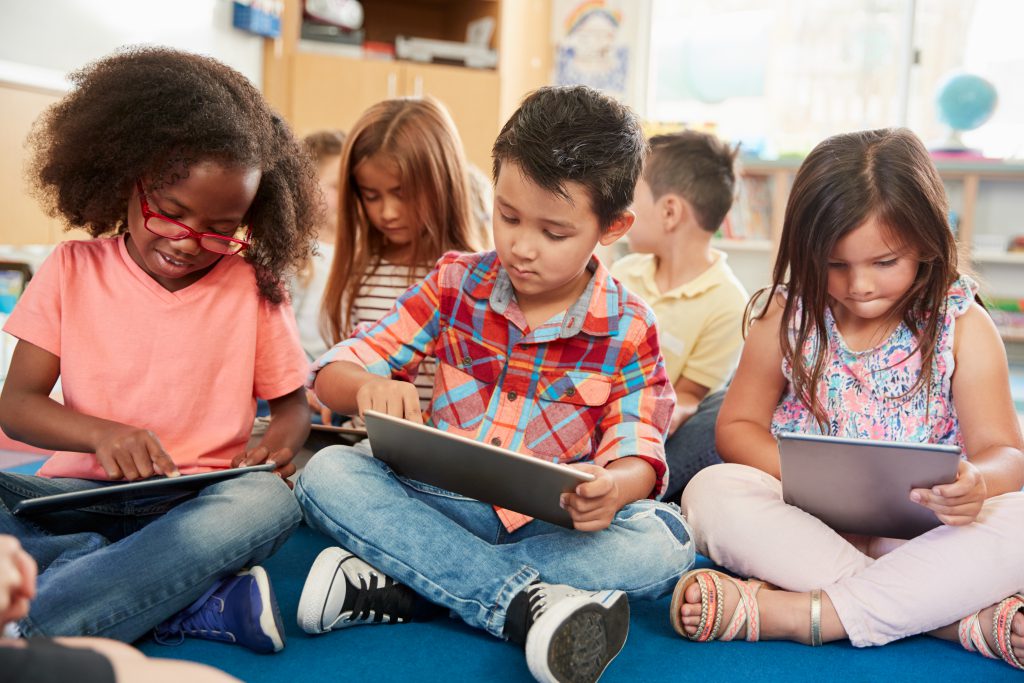As the world ventures deeper into the digital space, there is a growing need to explore the impact of novel digital technologies on children’s right to education. Conceptualising education as a human right necessitates greater attention to the United Nations’ 4A-framework (accessibility, adaptability, acceptability and availability), in particular: the accessibility and adaptability of school environments, beyond merely their acceptability and availability. New technologies have impacted all of these criteria, as the education sector continues to capitalise on emerging opportunities.
What is educational technology?
Educational technology, also known as EdTech is typically defined as the sector of technology dedicated to the development and application of tools for educational purposes (Lazaro, 2020). The introduction of these technologies has birthed numerous challenges which threaten to undermine children’s rights to privacy.
Education and child development
As has been shown, the digital environment shapes children’s development in an array of differing ways (Council of Europe, 2020). Technology permeates most areas of children’s day-to-day lives, creating opportunities for greater learning, communication and development, as well as new risks to children’s realisation of their human rights. In the educational arena, technology has provided new mediums for sharing and communicating information, connecting school communities beyond the classroom, and tailoring the delivery of education to individual children, among other innovations (Council of Europe, 2020). However, with these developments come new challenges.
EdTech and children’s privacy/data protection
Tools and software utilised in classrooms to enhance learning experiences are quickly evolving. From the use of advanced emotional AI and facial recognition, down to the simple migration of educational material onto online shared platforms, children’s learning experiences are quickly becoming intertwined with technology. All of these tools designed to support and facilitate children’s education are considered EdTech, and their emergence has presented new challenges for both children and tech implementers. As described by the Council of Europe, EdTech is often “deployed without various actors always being aware of the challenges to children’s private life and personal data protection” (Council of Europe, 2020).
In the rush to implement new technologies, educational regulators have failed to keep up with other industries in ensuring child data is adequately protected. Children’s educational data is “far less protected” than health data (Han Jung, 2020), and a large number of countries do not have data privacy laws which explicitly protect children. Without proper regulation, sensitive information about children – such as their names, addresses and behaviours – are open to exploitation (Han Jung, 2020). In 2020, numerous popular distance learning platforms drew criticism over their collection, sharing and management of child data (Han Jung, 2020).

Deeper research from eQuality lists some of the most pressing concerns around the use of EdTech: tracking of student activity in and outside the classroom, discrimination against children from marginalised communities, breaches of child data protection and autonomy, and the sale of child data to private third parties such as advertising companies (Bailey, 2020). These concerns can only be overcome if educators are mindful of the terms and conditions of the software in use, whether it was designed for educational purposes or not (such as videoconferencing applications such as Zoom or Skype).
In fact, technology designed for other purposes, but used as educational tools, necessitate greater attention on their data protection policies and constraints. Recent versions of Zoom, for example, stated that data collected from students included their name, school, devices and internet connections, and details about the content viewed by children and their communication with others via those devices (Bailey, 2020). Notably, consent to Zoom’s policies is given by the “school subscriber”, rather than a child or their guardian, rendering the policy inconsistent with children’s right to participate in decisions affecting them under the CRC (Bailey, 2020).
The impact of COVID-19 on educational methods
COVID-19 has greatly exacerbated pre-existing EdTech risks. Overnight, education has been forced to depend on technology, rather than simply utilise it to enable new teaching methods. During the spring of 2020 alone, schools in 192 countries were closed (Diaz, 2020). UNESCO estimates support this assertion, stating that 91% of the world’s student population were out of school in April of 2020 (Human Rights Watch, 2020). This has vaulted EdTech from an incoming phenomenon to a virtual necessity as one of the core mediums for the delivery of education. This occurrence has been described as the “biggest distance learning experiment in history” (Diaz, 2020).
Dependent on connectivity and resources, countries across the world have opted for differing ICT infrastructure to support remote learning. Alongside digital platforms, social media, radio platforms and TV have all been used to ensure continuity in education for all corners of the world. Notwithstanding, this transition to digital learning has amplified societal inequities, as children living in remote locations with little to no internet connection struggle to gain access to online services (Human Rights Watch, 2020). Though technology is designed to connect people by reaching frequently excluded areas, only a few educational systems around the world have been able to comprehensively respond to the challenges of the pandemic (Diaz, 2020).
Recommendations on using EdTech while protecting children’s rights
Educational policymakers must provide guidance and novel instruction on the use of EdTech to better protect children’s data. In 2001, the UN Committee on the Rights of the Child announced that “children do not lose their human rights by virtue of passing through the school gates” (Committee on the Rights of the Child, 2001). The majority of EdTech are developed and created by commercial actors, with limited regard for children’s vulnerability and inability to police and protect their own digital footprint. As technologies evolve to analyse more behaviours from children and further personalise learning experiences, there is a desperate need for regulation to ensure EdTech is inclusive, mindful and complementary to children’s development.
United Nations General Comment No.16 of 2013 calls on countries to ensure that private enterprises are not awarded public procurement contracts if they fail to respect children’s rights (Committee on the Rights of the Child, 2013). In the European context, the Council of Europe have issued guidelines calling on States to adhere to The Convention for the Protection of Individuals with regard to Automatic Processing of Personal Data (CETS No. 108), specifically by realising these rights in the context of children (Council of Europe, 2020).
Further, at the height of the pandemic, Human Rights Watch (HRW, 2020) called for governments to:
- Continue to provide adapted, accessible remote education for all once temporary lockdown measures end;
- Provide funding and support to under-resourced areas to ensure they are future-proofed and able to enjoy the benefits of remote learning, particularly by working to provide reliable internet access for all;
- Track gender and other disparities of children affected by school closures to guard against discrimination;
- Ensure that EdTech utilised in schools protects children’s privacy rights.

At Humanium, we seek to raise awareness on the importance of children’s rights to food, education and protection. Join us in making children’s rights to a safe environment and accessible education a reality by sponsoring a child, making a donation or becoming a volunteer!
Written by Vanessa Cezarita Cordeiro
For more information:
References:
Bailey, J. Burkell, J. Regan, P. Steeves, V. (2020, April 12). ‘Children’s privacy is at risk with rapid shifts to online schooling under coronavirus.’
Council of Europe. (2020, November 27). ‘Protect children’s personal data in an education setting.’
Diaz, M.M. Lee, C. (2020). ‘What technology can and can’t do for education?’
Human Rights Watch. (2020, April 9). ‘COVID-19 and Children’s Rights’.
United Nations. (2015). ‘Sustainable Development Goals’.
United Nations Committee on the Rights of the Child. (2001, April 17). ‘General Comment No. 1 Article 29(1): The aims of education’. CRC/GC/2001/1.


